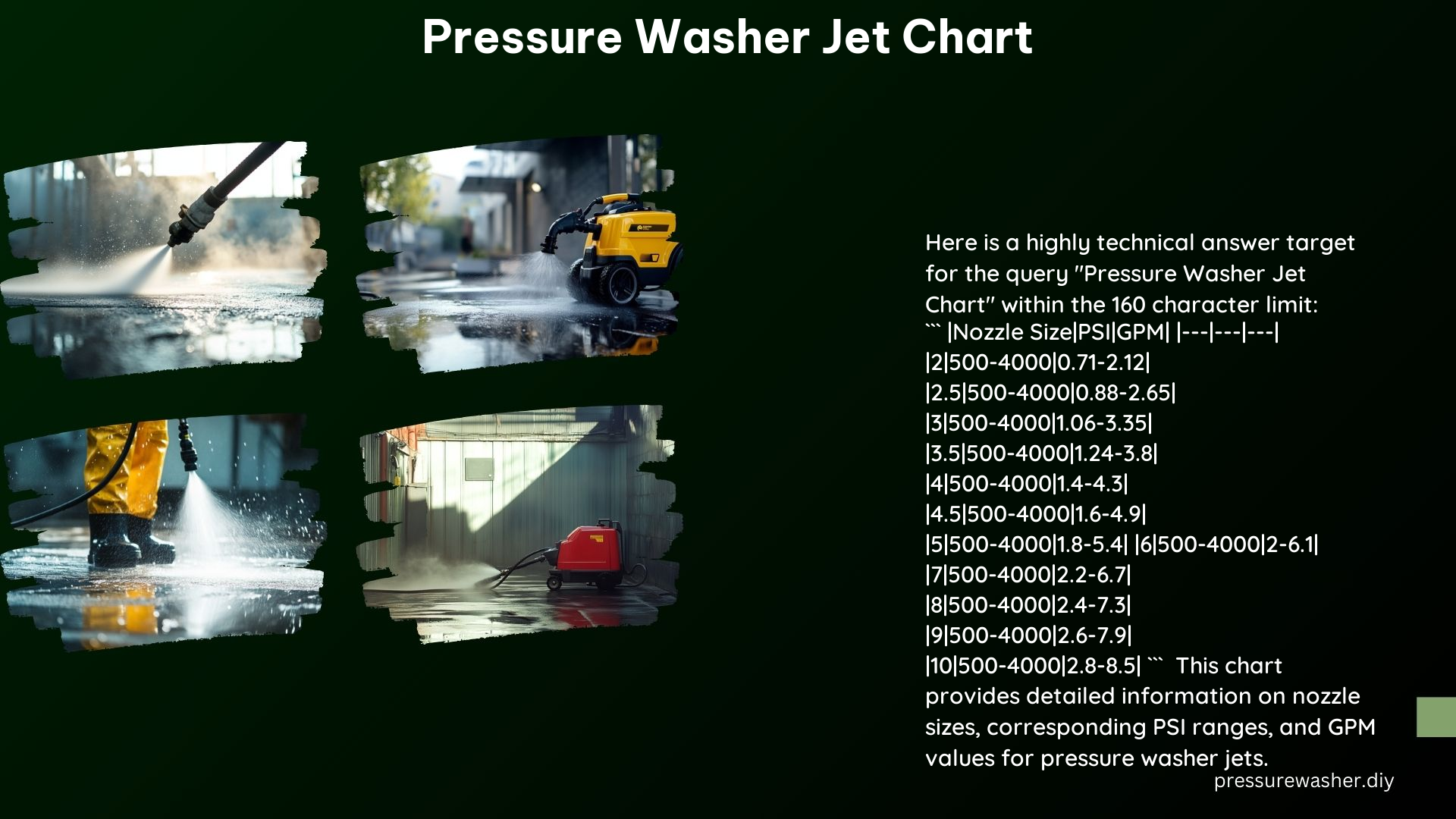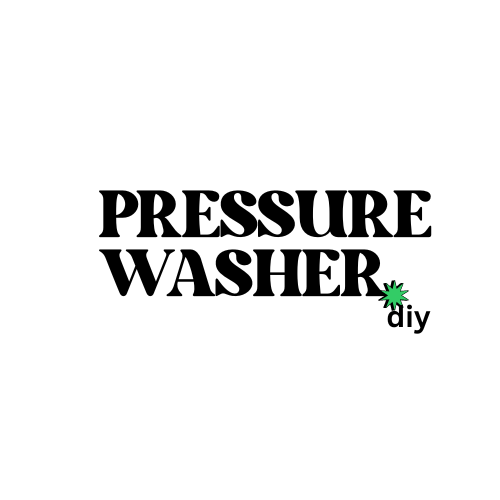A pressure washer jet chart is a crucial tool for selecting the correct nozzle size for your pressure washer based on its GPM (Gallons Per Minute) and PSI (Pounds per Square Inch) ratings. This comprehensive guide will provide you with the technical details and expert insights you need to ensure your pressure washer operates at peak efficiency.
Determining the Correct Nozzle Size
Cross-Referencing GPM and PSI Ratings
When selecting the appropriate nozzle size for your pressure washer, it’s essential to use a nozzle size chart that matches your machine’s specific GPM and PSI ratings. This will ensure you choose the correct nozzle size, which is crucial to prevent damage to your equipment or reduce cleaning effectiveness.
A typical nozzle size chart will list various nozzle sizes (e.g., 2.0, 2.5, 3.0, 3.5) and their corresponding PSI and GPM ratings. For example, a pressure washer with a 3.0 GPM and 3000 PSI rating may require a 3.0 or 3.5 nozzle size, depending on the specific chart and manufacturer recommendations.
It’s important to note that using a nozzle size that is too small can lead to over-pressurizing the system, potentially causing damage to the pump or other components. Conversely, a nozzle that is too large can result in under-pressurizing, reducing the cleaning effectiveness of the pressure washer.
Nozzle Size and Angle (Fan) Degree
The size of the nozzle orifice not only affects the operating pressure of the machine but also the spray pattern. Smaller nozzle orifices will increase the pressure, while larger orifices will decrease the pressure.
In addition to the nozzle size, the fan degree, or spray angle, is also an important factor to consider. Different fan degrees are suitable for various applications:
- 0° nozzles: Provide a narrow, high-pressure stream for cutting or stripping tasks.
- 25° nozzles: Offer a wider, general-purpose spray pattern for cleaning.
- 40° nozzles: Produce a wide, low-pressure spray pattern, making them ideal for washing vehicles or delicate surfaces.
By selecting the appropriate nozzle size and fan degree, you can optimize the performance of your pressure washer for the specific task at hand.
Key Factors to Consider

Equipment Specifications
The most critical factors in selecting the correct nozzle size are the PSI and GPM ratings of your pressure washer. These specifications are typically provided by the manufacturer and are essential for ensuring the proper nozzle size is chosen.
For example, a pressure washer with a 3000 PSI and 3.0 GPM rating would require a different nozzle size than a machine with a 2000 PSI and 2.5 GPM rating. Matching the nozzle size to the equipment’s capabilities is crucial for optimal performance and to avoid potential damage.
Application Requirements
The specific task or application you intend to use the pressure washer for will also influence the nozzle size and fan degree selection. Different nozzle configurations are better suited for various cleaning tasks:
- Cutting or stripping: 0° nozzles with a narrow, high-pressure stream.
- General cleaning: 25° nozzles with a wider, medium-pressure spray pattern.
- Vehicle washing: 40° nozzles with a wide, low-pressure spray pattern.
By considering the application requirements, you can choose the nozzle that will provide the most effective and efficient cleaning results.
Avoiding Over-Pressurizing or Under-Pressurizing
Matching Nozzle Size to Equipment
Using the correct nozzle size for your pressure washer is crucial to ensure the machine operates within its designed specifications. Selecting a nozzle that is too small can lead to over-pressurizing the system, potentially causing damage to the pump, hoses, or other components.
Conversely, a nozzle that is too large can result in under-pressurizing, reducing the cleaning power and efficiency of the pressure washer. This can lead to longer cleaning times, increased water and energy consumption, and suboptimal cleaning results.
Monitoring Pressure and Flow
To maintain the proper operating conditions, it’s essential to regularly monitor the pressure and flow rate of your pressure washer. This can be done using a pressure gauge and flow meter, which will allow you to verify that the machine is performing within the recommended ranges for the selected nozzle size.
If you notice significant deviations from the manufacturer’s specifications, it may be necessary to adjust the nozzle size or consider other maintenance or repair measures to ensure the pressure washer is functioning correctly.
Technical Specifications
Nozzle Size Chart
A typical nozzle size chart will list various nozzle sizes (e.g., 2.0, 2.5, 3.0, 3.5) and their corresponding PSI and GPM ratings. This chart serves as a reference to help you select the appropriate nozzle size for your pressure washer.
For example, a nozzle size chart may indicate that a 3.0 nozzle is suitable for a pressure washer with a 3000 PSI and 3.0 GPM rating, while a 3.5 nozzle would be better suited for a machine with a 3500 PSI and 3.5 GPM rating.
Orifice Size and Pressure
The size of the nozzle orifice has a direct impact on the operating pressure of the pressure washer. Smaller orifices will increase the pressure, while larger orifices will decrease the pressure.
As a general rule, a nozzle with a smaller orifice size will produce a higher-pressure, narrower spray pattern, while a nozzle with a larger orifice size will result in a lower-pressure, wider spray pattern. Understanding this relationship between orifice size and pressure is crucial for selecting the appropriate nozzle for your specific cleaning needs.
References
- Pressure Washer Nozzle Sizing Chart by pwoutlet.com
-
https://www.pwoutlet.com/pressure-washer-nozzle-sizing-chart/
-
Pressure Washer Nozzle Selection Guide by Portland Compressor
-
https://www.portlandcompressor.com/pressure-washer-nozzle-selection-guide/
-
Pressure Washer Nozzle Selection Chart by PowerWash.com
- https://www.powerwash.com/pressure-washer-nozzle-selection-chart/
